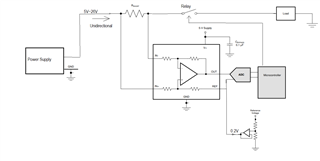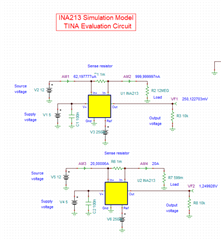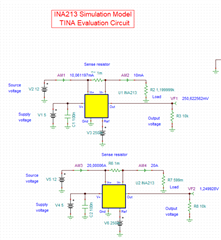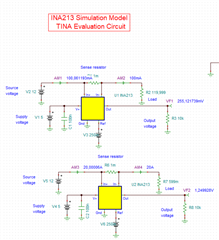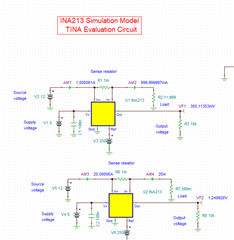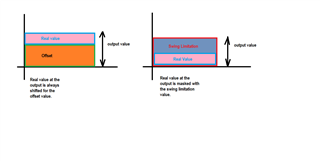Other Parts Discussed in Thread: THS4551, OPA320
Tool/software:
Hi,
there are many reference designs or app notes where the terminology "minimum detectable current" or "minimum sensing current" has been used, for example SBAA243A. This is mostly related to the Vos of the used CSA and it is a little bit confusing for me.
Let's consider a CSA where Vos is 500uV, Gain is 100V/V, bidirectional and we have Rsens 10mR. For this discussion the CMRR ane PSRR will not be considered. The minimum current that can be detected in this case is 50mA. Let's assume the Vref ist 2.5V. For the 0A load current the output of the CSA should be Vref +/-Vos*Gain = 2.55V or 2.45V.
If the load current is now 25mA, the output voltage will be:
a) Vref + Iload*R*Gain +/-Vos*Gain = 2.525V +/-0.05V = 2.575V or 2.475V
or
- b) The output will stay at 2.55V or 2.45V for any input current smaller than 50mA.
What would be the correct answer here?
If the load current is now 100mA, the output voltage will be:
c) Vref + Iload*R*Gain +/-Vos*Gain = 2.6V +/-0.05V = 2.65V or 2.55V
or
d) The output will see the load current only, because it is higher than Vos current, it means 2.6V?
What would be the correct answer in this case?
From my point of view the terminology "minimum detectable current" make sense for unipolar measurements where the output voltage swing limitation will limit the minimum input current, because the output will not change as long as the output voltage generated by input current is smaller than output low swing from the rail. It means the low voltage swing from the rail is going to "mask" the input current.
- For bipolar measurements the Vos current will be always added or subtracted to the output and than the "minimum detectable current" is confusing beacuse it can be understood as the current is not going to be detected.
BR
Josko


